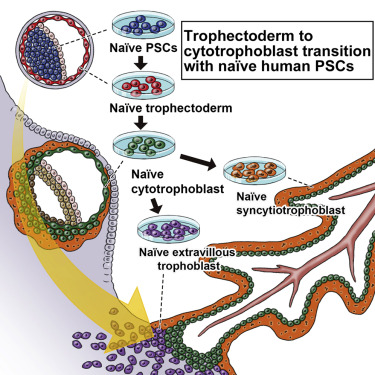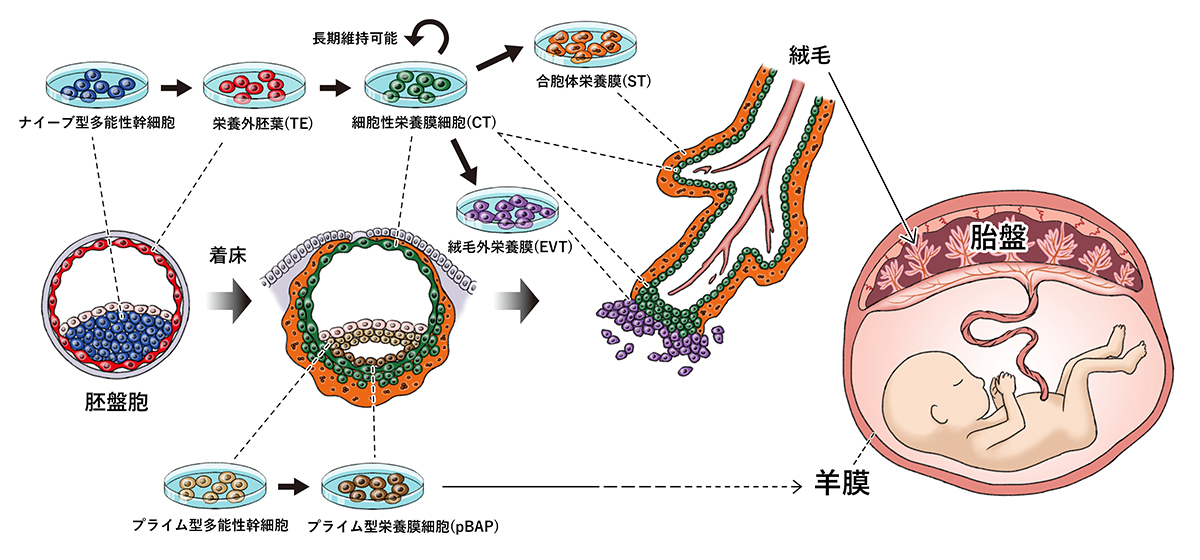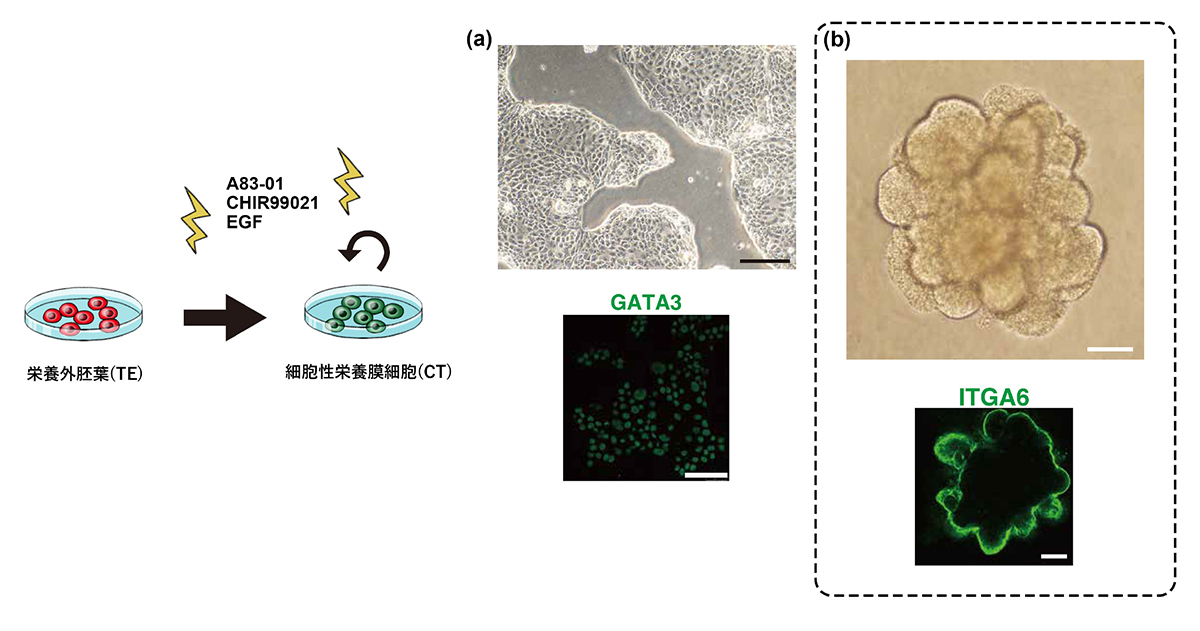


京大:iPSから胎盤細胞を作製:ヒトのナイーブ型iPS細胞(動画):
Kyoto Univ: Making placental cells from iPS: Human naive iPS cells:
京都大学:从iPS制备胎盘细胞:人类幼稚iPS细胞
ー妊娠合併症解明に期待ー
京都大・高島康弘講師:
人の人工多能性幹細胞(iPS細胞)から、実験容器内で胎盤の細胞を生み出した。
京都大・高島康弘講師らが、4月7日付・米科学誌セル・ステムセル電子版で発表した。
実験容器内で胎盤細胞形成:
胎盤は、子宮内で胎児に酸素や栄養を供給する。
胎盤細胞の形成に異常が生じた場合、
- 不妊や胎児の発育不全、
- 母体の高血圧など、
- 妊娠合併症の解明に役立つ。
高島講師は「胎盤細胞ができる過程のモデルになり、原因の解明に役立つ」と話している。
iPS細胞(ナイーブ型)使用:
高島講師らは、「受精卵により近くなるよう改良したiPS細胞(ナイーブ型)」を使用した。
山中伸弥京大教授らが当初開発したiPS細胞(プライム型)ではない。
培養液に加える物質や培地などを工夫した。
その結果、「栄養外胚葉から、3種類の胎盤細胞ができる過程」を再現した。
京大:時事ドットコム
https://www.jiji.com/jc/article?k=2021040800024&g=soc
ヒトのナイーブ型iPS細胞から胎盤細胞を作る
〜体外での胎盤発生モデル構築に成功〜
ポイント:
ヒトのナイーブ型iPS細胞から、初めて栄養外胚葉(TE) の作製に成功し、さらにその先の胎盤細胞へ続く細胞群への分化も確認できた。
技術的にも倫理的にも難しかったヒトの初期胚の研究において、体外で胎盤細胞の分化過程を模倣するモデルが構築出来た。
着床前後の胎盤細胞の変化を調べることが可能となる。
次世代iPS細胞として期待されるナイーブ型iPS細胞の初期分化系譜の一端を明らかにした。
CiRA(サイラ) | 京都大学 iPS細胞研究所
https://www.cira.kyoto-u.ac.jp/j/pressrelease/news/210408-000001.html
Stem cells reproduce the beginnings of the placenta
The Yasuhiro Takashima lab shows that naïve iPS cells can be induced to form all the stages that mimic early placenta development in humans.
Gynecologist Shingo Io knows that
during birth there will not only be a baby leaving the mother’s body.
Joining the cries that bring joy to the room will be a silent entity, the placenta.
Like the baby, this tissue only began to grow upon conception, but little is known about how the placenta develops inside the mother.
A new study by Io, CiRA Junior Associate Professor Yasuhiro Takashima and colleagues reports how iPS cells can be used to study this development.
The study is the first to show that
iPS cells have this potential and will be invaluable for understanding the many factors that lead to miscarriage.
No matter how old or how big, all of us began as a fertilized egg, which is nothing more than a single cell.
This one cell will grow into an embryo, which eventually leads to a fully formed human body.
That one cell also grows into extra-embryonic tissue that becomes the placenta.
While not part of the baby’s body, the placenta is essential for healthy growth.
Historically tossed aside like a bloody towel, it is now studied intensively.
CiRA | Center for iPS Cell Research and Application, Kyoto University
https://www.cira.kyoto-u.ac.jp/e/pressrelease/news/210408-000001.html
Capturing human trophoblast development with naive pluripotent stem cells in vitro
Highlights
• Trophectoderm can be generated from naive human pluripotent stem cells
• Human trophoblast stem cells represent post-implantation cytotrophoblast
• Trajectory of trophoblast from pre- to post-implantation is drawn by our model
• ACE is essential for specification and maintenance of cytotrophoblast stem cells
ScienceDirect
https://www.sciencedirect.com/science/article/abs/pii/S1934590921001193